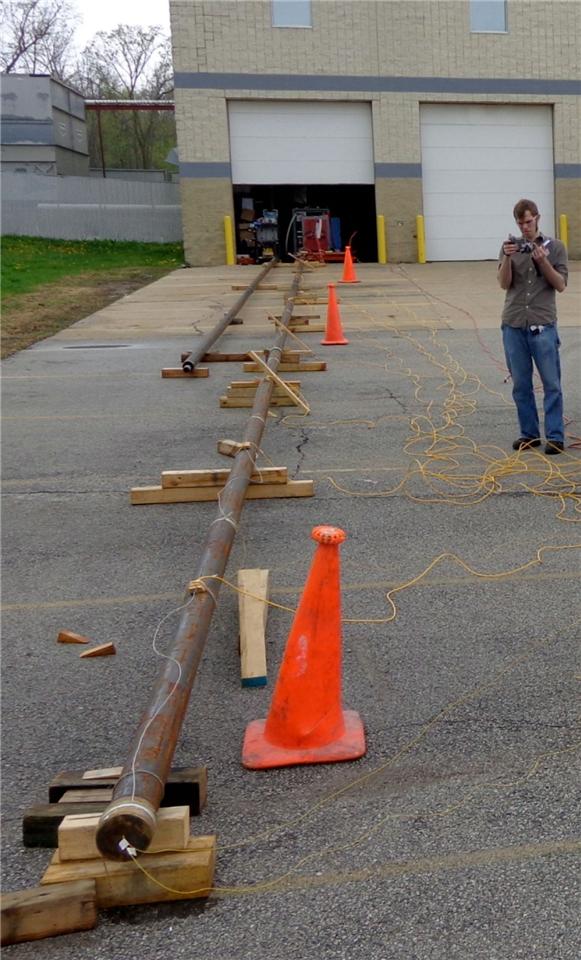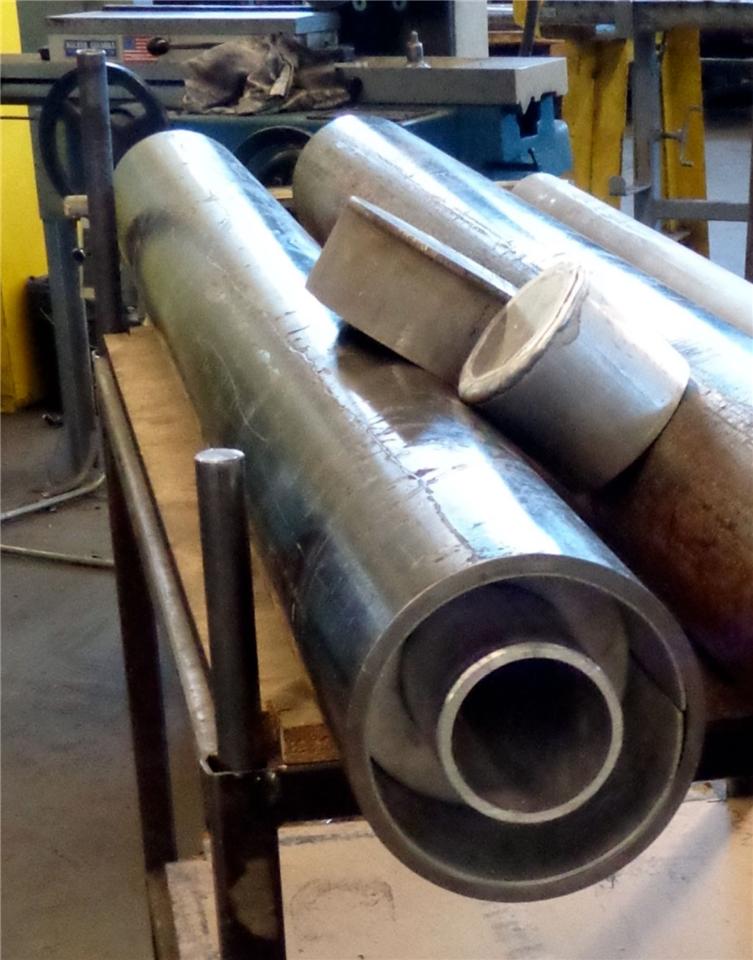The solution to heavy oil and paraffin-clogged mature wells can often by heat, but heat is hard to economically introduce into a well. Welcome to an interview with Richard Snow, Chief Scientist at PyroPhase, whose new technologies are designed to economically heat the reservoir and allow the oil to flow.
Figure (above) – Schematic of the PyroHeater construction, which has the following attributes:
1) It is fabricated from tough oil well pipe, making it robust enough for handling by oil field crews. 2) It uses radio frequency (RF) electricity, which flows in a thin skin on the inside of the pipe. This thin layer has a high resistance, so it serves as the heating element. 3) There is no current on the outside of the pipe, so no electrolytic corrosion occurs when exposed to well fluids.
The solution to heavy oil and paraffin-clogged mature wells can often be heat, but heat is hard to economically introduce into a well. Welcome to an interview with Richard Snow, Chief Scientist at PyroPhase, whose new technologies are designed to economically heat the reservoir and allow the oil to flow.
What is your name and your background in geology?

PyroPhase Inc. personnel conducted a test of their oil well heater at the facilities of Radyne Corp in Milwaukee recently. Power levels at 11, 16 and 40 KW at a frequency of 10 KHz were applied, reaching temperatures up to 180 oC (350 oF) in ½ hour.
My name is Dr. Richard Snow. My degrees are AB Chemistry Harvard, MS Chemical Engineering Virginia Tech, PhD Chemical Engineering, Illinois Institute of Technology. My knowledge of geology comes from what I've learned about oil reservoir behavior during work to apply our RF electric heating method to produce heavy oil from various geological formations. I was also Director of the National Institute for Petroleum and Energy Research, Bartlesville OK.
What are some of your current research interests?
As Chief Scientist of PyroPhase Inc. I am devoted to developing our three technologies using RF electrical heating to improve production of heavy oil resources. One is the PyroHeater, a patented down-hole electric heater for oil wells. The second is the PyroArray, an array of electrodes to heat oil sand resources and lower the oil viscosity so it can flow by gravity to a producing well below. The third is the PyroUpgrader, a reactor with supercritical water in a borehole heated by the PyroHeater, which can upgrade bitumen so it can be pipelined to a refinery without use of diluent.
How did you become interested in revitalizing reservoirs in mature fields?

The PyroHeater has no sensitive components, and no thin resistance wires to break. There is no current on the outside of the pipe, so electrolytic corrosion is avoided, a problem with other heaters. The tool can be inserted into wells of practically any design, including vertical and horizontal completions, to generate heat. And it is reusable.
This work was started in 1970's at IIT Research Institute, at the time of the previous oil crisis. We developed the PyroArray, and demonstrated it in an oil sands deposit in Utah. We have now formed PyroPhase to commercialize the technology. Our Chief Inventor Jack Bridges had also invented several electric heating methods for oil wells working with EOR Inc. These methods produced oil, but the heaters failed because they caused the pipes to corrode or the wires broke. With PyroPhase he solved this problem by inventing the PyroHeater, which uses the skin effect to provide electrical resistance heating in two concentric standard API pipes, which are robust in the oil well environment. They don't corrode because the current flows on the inner surface where they don't contact the well fluids. We've been looking for opportunities to apply it to oil fields since then.
What are some of the key technologies that you have worked with?
I already described two technologies. The third is the PyroUpgrader. Bitumen has to be upgraded before it can be refined into gasoline and diesel fuel. It is now mostly done at a refinery in a costly large reactor by the delayed coking process. Numerous laboratory studies have shown that bitumen can be upgraded at higher yield in supercritical water at temperatures of 440 oC and 30 MPa. But it has not been done in a commercial reactor. We have applied for a patent on a continuous reactor that can be made of API pipe and installed in a borehole. The key is to heat it with a PyroHeater. The big advantage is that it can be constructed near the producing wells. The upgraded product has low viscosity so it can be shipped by pipeline, avoiding the cost of diluent.
What kinds of technologies has your group developed? where has it been used, and what was the result?
We have tested the PyroHeater above ground and shown that it heats as intended. We have done computer simulations that show how effective it can be in heavy oil wells.
What are some of your plans for the future?
We have been working for 10 years to further these three technologies and to demonstrate them in a well. We have talked to all the major oil companies, who say they will use it after someone else first demonstrates it. But we presently have several opportunities to apply it which promise to get it done. We are going to keep working until we succeed, and we would appreciate your help.
Please list a few key articles that you consider useful.
Selected References
- JE Bridges, Radio-frequency technology heater for unconventional resources, US Patent 8,408,294, April 2, 2013, and 8,210,256, July 3, 2012.
- RH Snow, A Hassanzadeh, and JE Bridges, Control of in-situ production of unconventional resources by RF heating, 30th Oil Shale Symposium, Colorado School of Mines, Golden Colo. October 2010.
- JE Bridges, Electro-thermal energy storage for intermittent energy sources to recover hydro carbonaceous earth formations, US Patent 7,484,561, Feb 3, 2009.
- Hassanzadeh, Armin, Two-Phase Modeling of Gravity Drainage of Bitumen from Tar Sand Using In-Situ RF Electrical Heating, COMSOL Conference 2008, Boston.
- JR Bowden, GD Gould, RR McKinsey (Bechtel Group), JE Bridges and G Sresty (IIT Research Institute), In Situ Retorting of Oil Shale Using RF Heating. Presented at the Synfuels 5th Worldwide Symposium, Washington D.C., November 1985.
- JE Bridges, RH Snow, and A Taflove, Net energy recoveries for the in situ dielectric heating of oil shale, 11th Oil Shale Symposium, Colorado School of Mines, Golden Colo. April 1978.